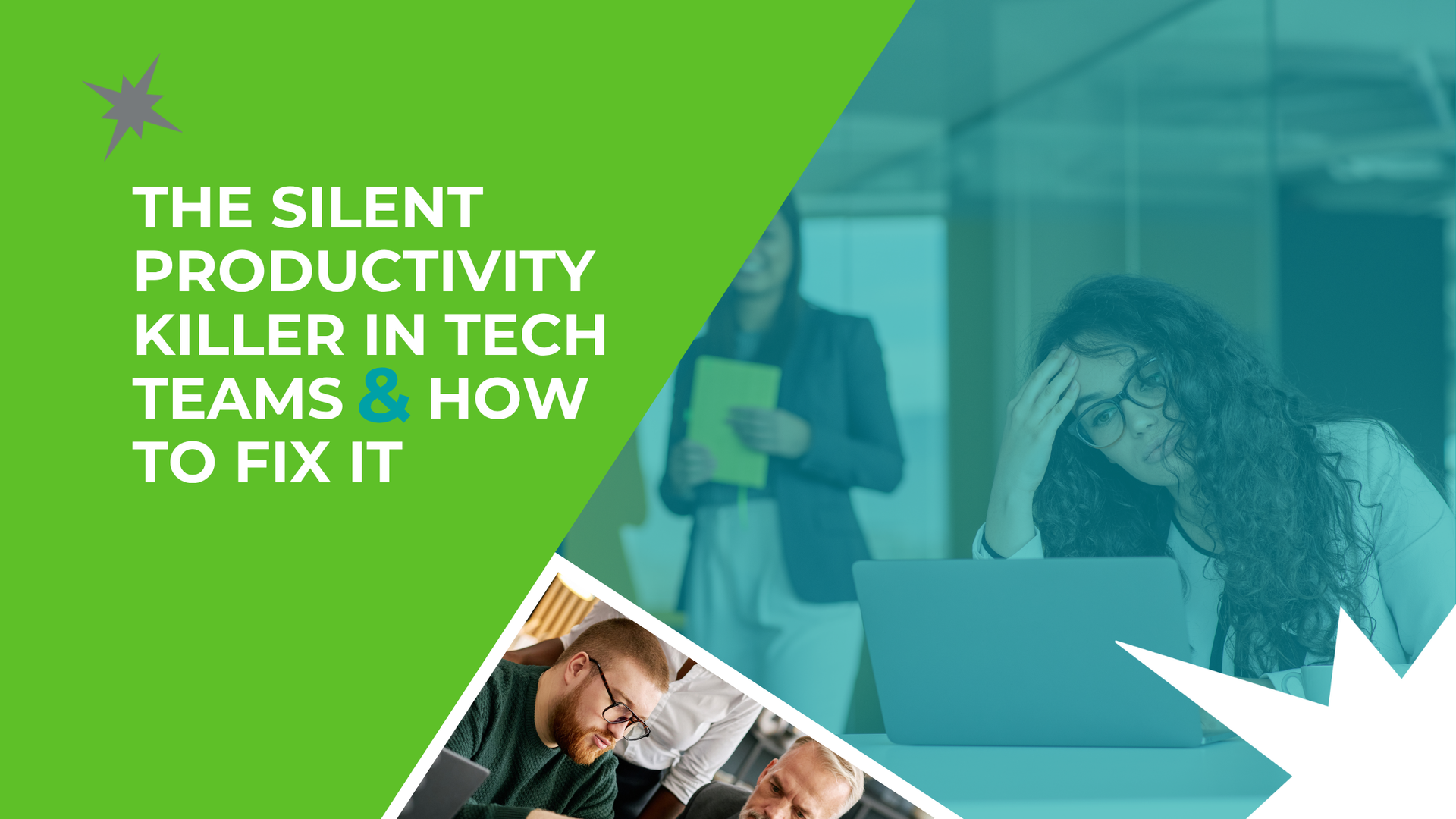News & Insights
< Back to Blogs
8 Ways to Foster Innovation in Your Team

Innovation is a linchpin for success in the technology sector. That’s why it's essential to understand how to drive innovation in your team, not just for the benefit of the business' bottom line but to engage (and thus retain) your valued employees.
What follows are some suggestions for fostering innovation in the workplace – ones that will help you cultivate the right conditions to allow it to flourish.
1. Look at Your Leadership
Your leadership style has the power to either stifle or ignite innovation. When it comes to ideas, aim to be a sounding – rather than a stopping – board. While it's important to provide guidance and advice, encourage a free flow of thoughts in an environment where no idea is a bad one.
Innovation also can't occur without action. That's why you should be open to acting upon ideas when given or provide a clear rationale if it's not within your scope or in the business' best interests. Take care to frame such feedback as positively as possible to encourage future 'out-of-the-box' thinking.
2. Consider Your Team and Greater Organisational Structure
There are many impediments to innovation, including management hierarchies, company policies, and business processes and practices.
Reflect on your current structure and consider what could be tweaked, condensed or even removed to foster greater levels of innovative thinking. It could be something as simple as automating a manual process to free up a little more developer time, or something more substantial like an overhaul of reporting structures to allow for faster team decision making.
If you feel it's appropriate, involve your team in this process. One way is to ask them to complete and then openly discuss the following statements. It should be in relation to different aspects of their daily work:
- It would be great if we could...
- But we don't because...
It's a simple but effective way to highlight what might be blocking your employees from engaging in creative thinking.
3. Nurture an 'It's OK to Fail' Culture
Most innovation involves an element of risk. But if employees are worried about possible repercussions in the event of failure, or even that their idea will be rejected before it's given consideration, it's not likely they'll be open to sharing their thoughts or willing to step outside their comfort zone.
Aim to nurture an environment where calculated risk-taking is encouraged. Let team members know it's okay to make mistakes, whilst encouraging them to always find the lesson in the failure.
One way to cement your commitment to this is to celebrate and reward failure, as you would successes. India’s largest conglomerate, the Tata Group, is an example. They have a 'Dare to Try' award that honours those who took risks, failed but still learned valuable lessons along the way. It began with just a handful of award applicants and now has almost 150 each year, with the top few showcased at their annual company gala 'Innovista'.
4. Recognise the Value of Recognition
The most innovative employees have a few things in common – they feel encouraged, empowered and challenged in their work. As a manager, you have a crucial role to play in providing proper recognition not only for creative thinking, but for 'everyday' work as well.
It's amazing how much impact a simple 'great job' from a manager can have. It can lead to a desire to do more and do better (two key components in ground-breaking thinking). Other ideas include financial rewards and/or extra leave entitlements.
5. Provide the Right Resources
Often, the easy part of innovative thinking is coming up with the idea. The hard part is securing the resources to achieve it. Resources can take many forms including management support, money and time. What you can provide in any or all of these areas greatly improves your employees' chances of coming up with novel ways of solving business and client problems.
In the tech space, time is at a premium, so developers don't usually have the bandwidth to experiment with new methodologies (although they’d likely love to!). This impacts their ability to innovate. A number of well-known global companies, such as Google and 3M, addressed this issue by instituting policies allowing their employees to spend part of their work hours on a passion project, be it work-related or not, and reaped the rewards.
6. Make Your Workspace 'Innovation-friendly'
Many conceptual thinkers enjoy the creative bounce-off collaboration brings. Are your office and virtual workspaces adequately set up for this? Think about things such as noise management, comfort/ergonomics, privacy, tech support and even outdoor options.
7. Try Not to Fall Into the Competition Trap
It's natural (and smart) to keep an eye on your competition, benchmarking your work against theirs. But in doing so, it's easy to fall into the trap of doing things in a similar way. Your advantage might lie in asking yourself and your team the question – what would happen if we were to do the opposite?
8. Encourage Mentorship
The standard form of mentoring involves pairing a less experienced employee with a more experienced staff member to help them learn the ropes. But such a relationship can work both ways to foster innovative thinking. As Zen master Shunryo Suzuki says, "In the beginner's mind there are many possibilities; in the expert's mind there are few.”
Further Innovation or Tech Jobs Support
These are eight ideas for fostering innovation in the workplace. While they involve some time and effort, we're sure you'll agree the rewards are well worth it.
As a Technology and Digital Recruitment specialist, we've encountered a host of innovative thinkers in our time and enjoyed placing them with the right employer. If you're looking for your next great recruit for your tech job in Sydney, Melbourne or Canberra, please get in touch.
Share This Article
Recent Articles

Filter By Category
Subscribe to our News & Advice












